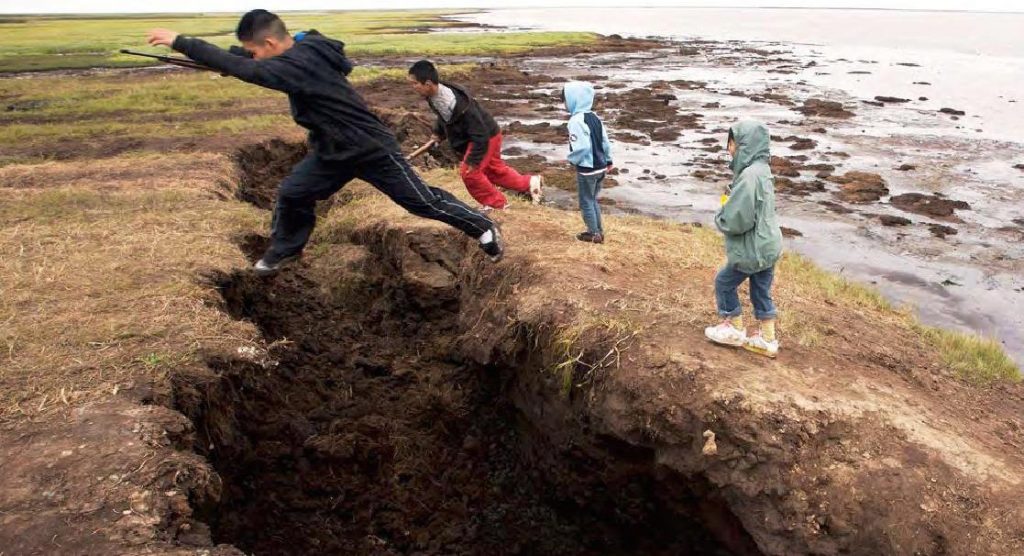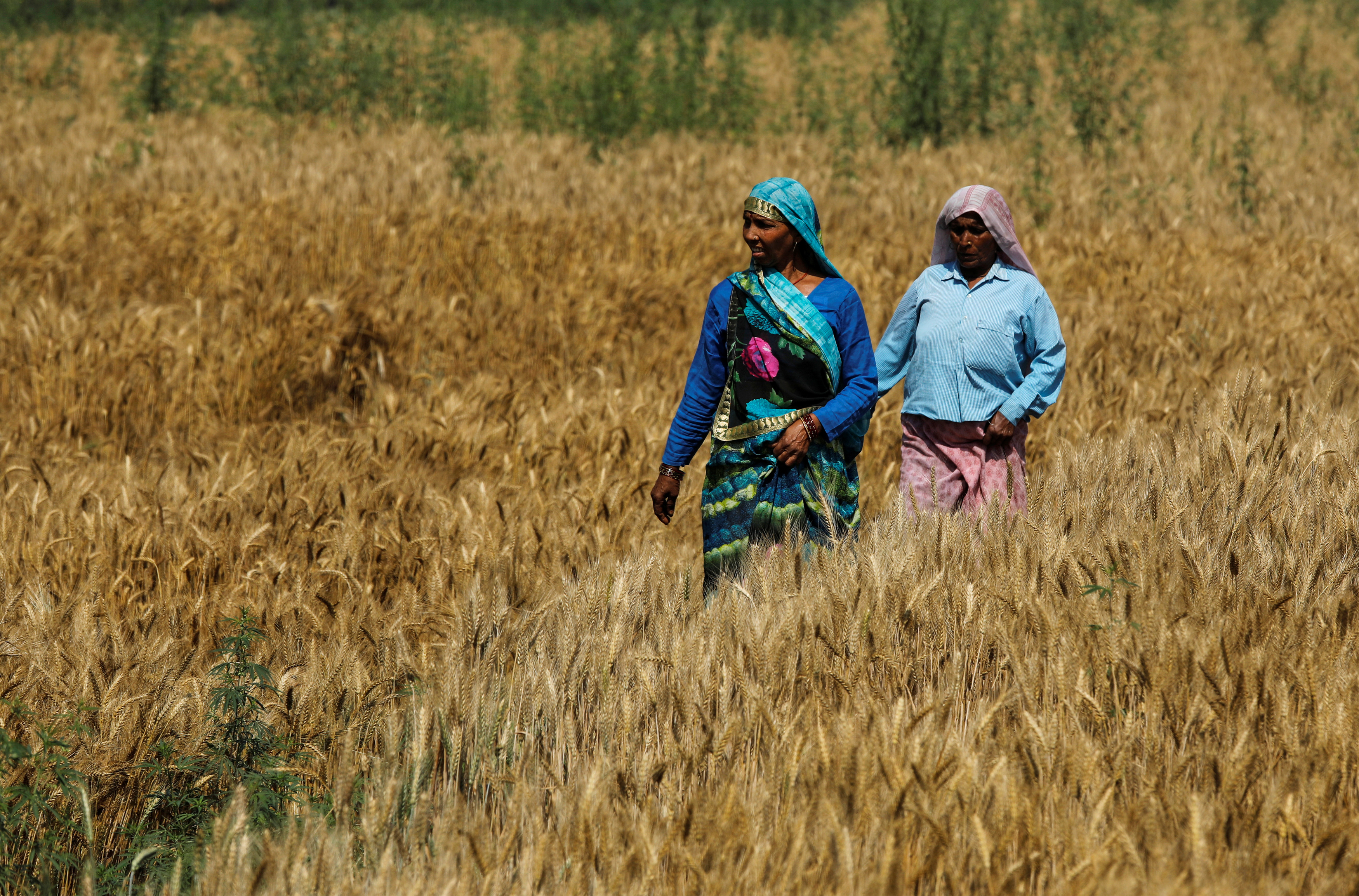Arctic warming could cost the global economy nearly $70 trillion dollars, says study
The burden will fall heavily on poor nations far from the Arctic.

Warming in the Arctic, it is well-understood, feeds on itself. Warming creates more melt and thaw, which creates more warming, a process known as Arctic amplification, which is causing the Arctic regions to warm at least twice as fast as the global rate.
Now scientists, in a new study published in the journal Nature Communications, have crunched the numbers to estimate the global economic toll of two major Arctic Amplification forces — loss of sunlight-reflecting Arctic ice and snow, which allows more solar heat to be absorbed, and thaw of Arctic land permafrost, which allows previously freeze-trapped carbon to stream into the atmosphere, adding to the planet’s greenhouse gas layer.
The bottom line: those two factors alone will create about $25 trillion in economic costs over the very long term, even if the most ambitious goals set in the 2015 Paris climate agreement are met and the rise in global temperatures is limited to 1.5 degrees Celsius by 2100. If the temperature increases by 2 degrees Celsius, those costs will rise to about $34 trillion, according to the study.
If the world continues on its current path, without additional emissions curbs to slow warming, the toll will be nearly $70 trillion, according to the study.
Those costs, projected out to the year 2300, are on top of the expected economic toll of higher global temperatures, which will impose burdens from effects like rising seas and more powerful storm surges that threaten populated coastal areas, dangerous heat waves, crop failures, droughts and wildfires.
“It’s the additional economic costs when you account for emissions of carbon from thawing permafrost and a non-linear albedo feedback,” said co-author Kevin Schaefer of the National Snow and Ice Data Center in Colorado. Albedo is a measurement describing how much sunlight is reflected, and white sea ice has much higher albedo than dark ocean water.

Those additional economic costs created by Arctic permafrost thaw and ice and snow loss — an extra 4 percent to 5.5 percent of costs, according to the calculations — will fall heaviest on hot, poverty-stricken regions far south of the Arctic, places like Africa and India, the study said.
While the Arctic regions are expected to suffer losses from damages to infrastructure atop thawing permafrost, the poor areas in the hot south are far more vulnerable economically, Schaefer said.
“Poorer areas don’t have the resources to respond,” he said.
Cold regions can get some economic benefits from warmer temperatures, such as reduced heating costs, that could partially offset the economic losses from climate change, but the same is not true for countries that already have hot temperatures, said Dmitry Yumashev of Britain’s Lancaster University, the study’s lead author.
“This is because warmer seasonal temperatures and stronger weather extremes reduce human productivity, reduce agricultural output, require more energy for air conditioning, damage infrastructure and so on,” Yumashev said in an email.
Scientists in a 2015 study calculated a mean annual temperature — 13 degrees Celsius, or 55.4 degrees Fahrenheit — that is considered optimal for economic performance, he noted. Countries already warmer than that “are going to face increasing losses,” he said.
The new study uses a model projecting climate outcomes under a variety of public-policy scenarios combined with economic models. “We allow those processes to interact with each other,” he said.
The physical changes emanating from the Arctic to the rest of the world will not follow a straight line, according to the calculations.
Effects of ice and snow loss are seen earlier in the projections, while there is still enough Arctic sea ice and snow to be a big factor. After a certain amount of warming, “there is simply not enough sunlight and not enough ice and snow left to melt in the Arctic to maintain the high albedo feedback from current conditions,” Yumashev said in his email.
Effects of gas emissions from permafrost thaw show up later, generally after the end of the 21st century, according to the calculations. “Greenhouse gas emissions from thawing permafrost lag behind the warming since it takes time to melt the ground and then decompose the thawed organic matter,” Yumashev said.
The gases released by permafrost thaw will have more dramatic effects in the long term, and those effects will be felt far beyond Arctic landscapes, Schaefer said. “When the permafrost emits this carbon, it gets emitted throughout the globe and it doesn’t stay in the Arctic,” he said.
Until recently, climate models have not been able to factor in the effects of thawing permafrost, he said. There was little known about the subject 10 or 15 years ago, he said. “The understanding of how much carbon is in the permafrost and how much will leak out, that’s really a new area,” he said.
The study does not calculate effects of other Arctic or near-Arctic factors that might be considered “tipping factors.” It considers the emissions from thawed land permafrost but not from thawed subsea permafrost; the marine permafrost is much less understood than terrestrial permafrost. Also considered “beyond the scope of this study” are inputs from the changing boreal forest or the Greenland ice sheet.
There are potential tipping factors outside of the Arctic that the study also mentions, such as loss of tropical forests, melt of Antarctic ice and the El Nino cycles in the Pacific.